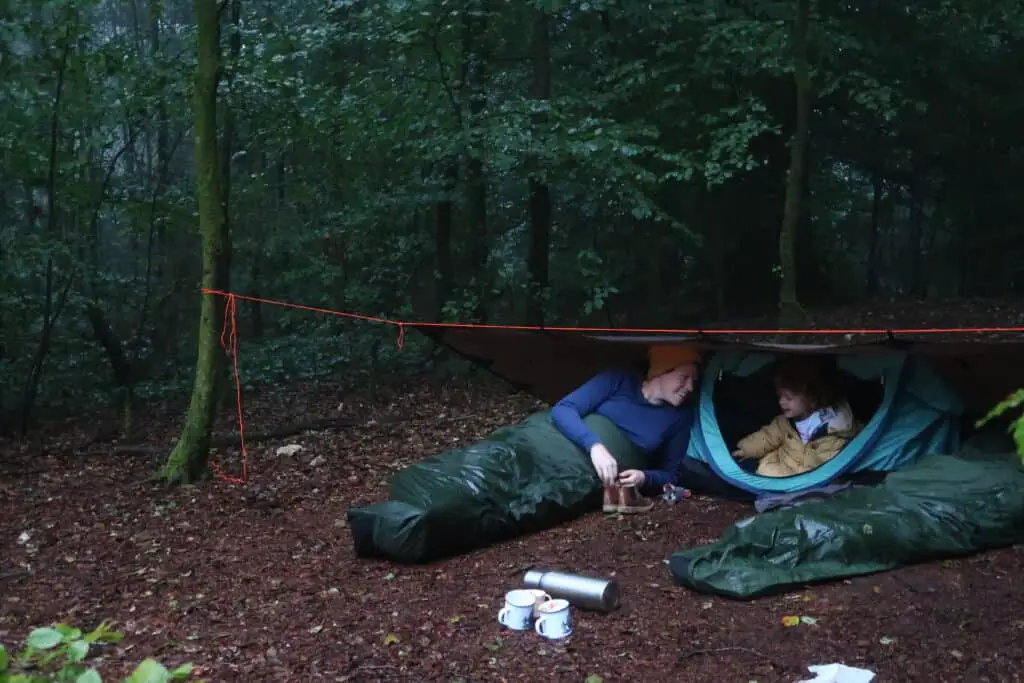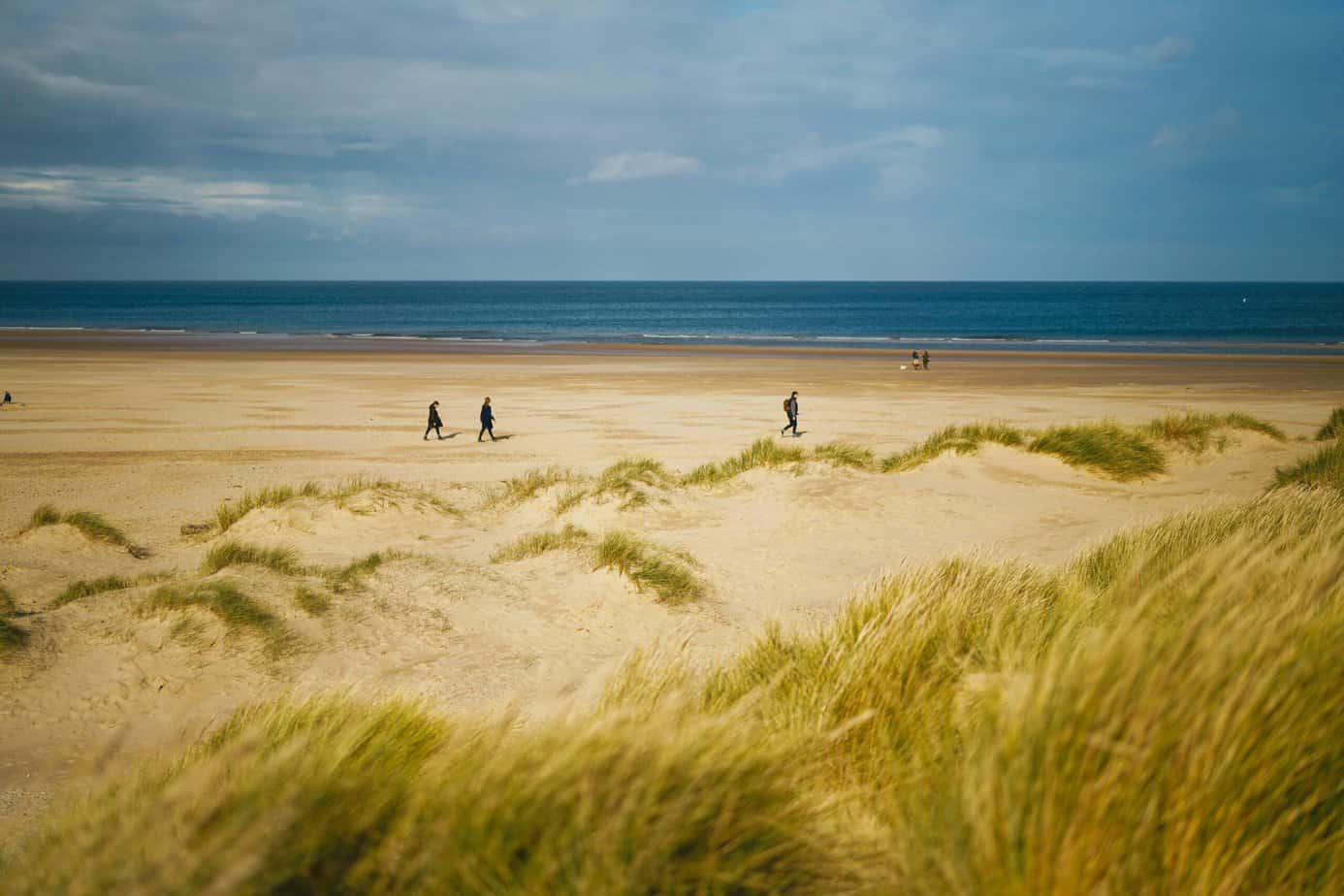I’m a big advocate for wild camping, as long as it’s done respectfully and with respect to nature and local residents. If you know how to do it correctly, wild camping can be done anywhere and is a great way to connect to nature and have a microadventure. In this wild camping Norfolk guide, I’ll cover everything you need to know for anyone wanting to try a stealth camp in the county.
Norfolk is one of the most beautiful counties in the country, with stunning nature, enticing coastlines and lots of wildlife to spot. But how do you go about planning a wild camping adventure here?
Let’s start with the basics….


Who am I?
Is wild camping in Norfolk legal?
It’s important that you are aware that wild camping in the UK is not technically legal. The only way you can do it legally is to get the landowner’s permission, which isn’t an easy thing to do. Keep in mind, though, that trespassing is a civil offence. So you aren’t going to get a criminal record or get in trouble with the police.
We are unfortunate to live in a country that has privatised a lot of our wild spaces and doesn’t allow wild camping. HOWEVER…..it is still possible.
Wild camping is widely tolerated in the National Parks. Outside of these spaces, if wild camping in a way that is respectful (i.e., leave no trace, pitch late, and leave early), it’s very doable. The reality is that, in most cases, no one will know you are there. And even if you do get spotted by a passing dog walker, if they see you are being respectful and not causing a nuisance, then the chances are they will just ignore you.
I’ve wild camped in so many spaces around England. Even in heavily built-up areas such as London. Of the hundreds of nights I’ve spent out in the wild, I’ve never been moved on. Not once!
To give you a flavour of what it might look like wild camping in your local area, watch this short film I made of bivvy camping with our toddler. This was in a local woods near where we live. Not technically legal but no one spotted us, and we left no trace:
If you haven’t already, make sure you read my general UK Wild Camping guide, where you’ll see a list of the ‘leave no trace’ rules and the correct practices to ensure your camp in a way that is respectful and prevents you from being seen.
Best places to Wild Camp in Norfolk
I’ll give a few suggestions here on areas in Norfolk where you might be able to find a wild camping spot. I’d really recommend trying to find your own spot as much as possible – it really is part of the fun!
Get your hands on a local map or use Google Maps to pinpoint areas of nature that are away from houses and people. A quiet wooded area or hidden on top of a sleepy hill are the ideal spaces to tuck yourself away for a night.
Or look for secluded sections on a beach where you can be away from lots of dog walkers. Make sure you check the tide times and pitch way back so you don’t get caught out in high tide. That’s a sure way to ruin your Norfolk wild camping adventure!
#1 Norfolk Trails
Norfolk has a number of long-distance trails – such as the Peddars Ways and Norfolk Coastal Path. These really are a great starting place when looking for wild camping spots, as hikers of the trails will often pitch up in quiet spots not far from the path if hiking the whole trail.
It’s a great way to combine wild camping and hiking. Why not challenge yourself to spend a few days on one of these great trails, wild camping as you go?
You can see a full list of Norfolk’s Long Distance Trails here. This video is a good example of how to wild camp on the trail. These hikers pitch up on Peddars Way:
#2 Salthouse
Encompassing over 450 km2 of coastal and agricultural land, the Norfolk Coast AONB (Area of Outstanding Natural Beauty) stretches from Winterton’s dunes to Wash in the west, offering a landscape of extraordinary diversity and scientific significance. This stunning region, ideal for wild camping, boasts beautiful beaches, incredible wildlife, and breathtaking views.
Salthouse is great for wild camping. Nestled between a salt marsh and a high ridge in north Norfolk, this coastal village is 24 miles northwest of Norwich. Just a short distance from the village, a road leads to a picturesque pebble beach. However, for a unique camping experience, take a left before reaching the beach and head to the grass-covered mounds. Choose the largest one, set up your tent, and soak up the gorgeous views.
#3 Thetford forest
Thetford Forest offers loads of wild camping opportunities. Covering an extensive area, Thetford Forest is the largest lowland pine forest in Britain, offering a diverse landscape of dense woodlands, heathlands, and picturesque trails.
Managed by Forestry England, the forest provides a haven for outdoor enthusiasts, with numerous walking and cycling routes, including the renowned Peddars Way and the Norfolk Coast Path. Visitors can explore ancient relics like Grimes Graves, a Neolithic flint mine, or immerse themselves in the serene surroundings while engaging in a variety of outdoor activities.
#4 Trimingham Cliffs
Nestled southeast of Cromer in Norfolk, Sidestrand and Trimingham Cliffs unfold as a captivating 133.9-hectare (331-acre) haven, designated as a Site of Special Scientific Interest. Enveloped by the Norfolk Coast Area of Outstanding Natural Beauty, this geological gem is a testament to the Earth’s narrative. Beyond its geological wonders, the site shelters rare beetles and the elusive purple broomrape, a parasitic herbaceous plant found in the Red Data Book.
If you are looking for the perfect combination of woods and beach, then try a stealth camp at in the woods at Trimingham at the top of the cliff path. Make sure you always leave lots of distance between you and the edge of the cliffs.
#5 Burnham Overy Staithe
Drive west along the enchanting A149 until you arrive at the picturesque coastal village of Burnham Overy Staithe. From there, head north along a mile-and-a-half pathway, weaving through a captivating marshland bustling with starlings and diverse wildlife.
As you reach the final stretch, scaling the towering dunes, your reward unfolds – Norfolk’s pristine and expansive golden beach stretches for miles! The beauty of camping here lies in the tranquillity, with sparse crowds ensuring a worry-free experience. Remember to depart early, leaving your camping spot pristine.

#6 John’s Water
John’s Water, nestled 3 miles northwest of Aylsham, is often home to a few local wild campers. To reach this serene locale, follow Cromer Road north from Aylsham, turn left at the first junction, and continue west past Blickling Park Farm until you arrive at Mill Farm Barn, adjacent to John’s Water.
This idyllic site features a deep pool with a shallow entry near Blickling Mill, a favourite summer bathing spot where adventurous individuals often leap from the nearby bridge. Convenient parking spaces are available close to the mill. Across the River Bure is wooded expanse extending eastward, which is where you’ll easily find a cosy wild camping spot with ease. Follow the leave-no-trace rules to respect landowners in the area.
And don’t forget to pack your bathers for an early morning refreshing dip!
#7 The Broads
The Broads, a mesmerising blend of wildlife, waterways, and landscape, steeped in history, stands as a unique treasure in Britain. This network of navigable channels and protected wetland, positioned west of Great Yarmouth, captivates thousands of visitors annually.
Wild camping is not out of the question here. In fact, it’s quite popular, especially during the warmer months. Opt for a camping spot near one of the numerous waterways and stay discreet – utilise the reeds for concealment. Given the area’s flatness, make sure to set up your camp late and leave early to remain unnoticed.
Echoing the allure of Thetford Forest, the Broads is an exceptional choice for wild campers keen on wildlife watching. The region is home to a variety of species, including otters, Swallowtail butterflies, sparrowhawks, cormorants, marsh harriers, Egyptian geese, great crested grebes, moorhens, and more, with a quarter of these species enjoying international protection!

Resources for Norfolk Wild Camping
If you are new to wild camping in the UK, I can highly recommend getting a copy of Britain’s Best Small Hill’s. Written by the brilliant Phoebe Smith, the book gives advice and suggestions on wild camping spots, giving you a good sense of how you make a success of this activity.
I’m also a big fan of Alastair Humphrey’s Microadvenutres book, which also includes lots of wild camping inspiration and advice.
A map of the area you are camping is an essential tool for planning and searching for good wild camping spots:
Nearly Wild Camping – a good first step if you feel nervous
If you don’t feel ready to do a full-on wild camp adventure but want to experience the quiet and back-to-basics that you get with this experience, then another option is to ‘nearly wild camp’. This is to use basic camping sites that focus on reduced numbers and bare facilities so you feel close to nature. You pay a small fee but have the peace of mind of knowing you are allowed to be there.
Nearly Wild Camping is the best site for finding these places. Or you could stay at Castle Wild Camp or Alby Wild Camping.

Best Wild Camping kit
Camping can be chillier than anticipated, so it’s wise to layer up with warm hats and clothes. For tips on staying cosy while camping, check out my tips on staying warm while camping. Remember, once you’re cold, the only remedy is to move and generate body heat.
Here are my top recommendations for wild camping gear:
- Tent: The MSR Hubba Hubba (either the 2 person or 1 person), although pricey, is a top-tier option, akin to the Ferrari of tents. For a more budget-friendly choice, the Vango Nevis 200 is highly recommended and proven resilient in severe storms.
- OR Bivvy Bag: Alpkit Hunka bivvy bag really is the best bivvy bag I’ve tried – super lightweight and minimal condensation.
- Roll Mat: The luxurious Thermarest Neo Air, is my preference, but a basic roll mat suffices. If on soft terrain, like grass or woodland, you might not even need one for a short stay.
- Sleeping Bag: The Tundra Pure and Dry 0 offers warmth and lightness. A quality sleeping bag is a game-changer, especially for those who feel the cold. Initially, a simple Vango sleeping bag is adequate for summer nights.
Additional wild camping essentials:
- Headtorch: The Petzl Tikkina is recommended, though a phone’s torchlight could also work for a night.
- Water Bottle
- Food and Snacks
- Rucksack: The Osprey Eja 38 is a reliable choice for carrying gear.
- Phone: Essential for safety, even if unused.
- Anker Power Bank: Handy as a backup phone charger.
For added comfort, consider these luxury items if the load isn’t a concern: a book, a journal, and a small pillow.
Final inspiration for your Norfolk adventure!
- This adventurer spent 3 nights driving and wild camping in the Norfolk area. Have a read of her trip report to get a sense of the sort of places you can wild camp in Norfolk.
- This guy walked 200+ miles around Norfolk and wild camped every single night. You’ll find loads of wild camping in Norfolk inspiration on his blog.
Or have a watch of these people doing a successful Norfolk wild camp:
I hope you found this Wild Camping Norfolk guide helpful. A lot of wild camping is simply getting over the fear of being found or moved on. So throw yourself into the activity with confidence…..you won’t regret it!
For more adventure inspiration and advice, follow me on Facebook and Instagram. Or you can subscribe to my YouTube channel.
I give all my advice for free on my website. If you want to say thanks, you can buy me a coffee!
Happy wild camping 🙂 Leave a comment below with your questions, or let me know how you got on with your adventure!




![9 Best Kids Folding Chairs [2024]](https://www.theordinaryadventurer.com/wp-content/uploads/2024/04/matthew-osborn-mlHss8VKk-I-unsplash-400x250.jpg)
![Wild Camping Dorset GUIDE // best camp spots [2024]](https://www.theordinaryadventurer.com/wp-content/uploads/2024/02/Forest-wild-camp-400x250.jpg)

0 Comments